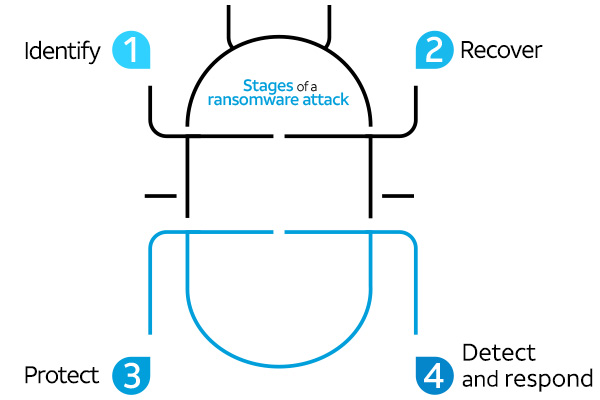Can industrial connectivity improve worker efficiency?
This post was sponsored by AT&T Business, but the opinions are my own and don’t necessarily represent positions or strategies of AT&T Business.
The bolt wasn’t tight enough.
It sounds almost insignificant, yet if your family is sitting in a car with a compromised part, the potential fallout from human error is serious. As electric vehicle-maker Rivian recalls 13,000 vehicles, the question we might ask is how can industrial connectivity improve worker efficiency?
Quality is at the center of that question. When you’re making products with hundreds of parts (or in the case of a car, 30,000), you need to bake quality into efficiency. Otherwise, your manufacturing processes might be faster, better, smarter, but not necessarily contributing to excellence.
What is industrial connectivity?
We have the tools today to marry industrial connectivity with worker efficiency. First, though, let’s get on the same page: What is industrial connectivity?
Think of it as the framework of your house. You can change the decor or even knock out walls, but the foundation remains. Industrial connectivity is the backbone to digital transformation. It connects people with the Internet of Things (IoT), data and insight.
To see how industrial connectivity works, I visited with Gillen Young, chief architect IoT Solutions AT&T at MxD in Chicago where he explains “how wireless communication using cellular is an emerging option versus just Wi-Fi.” The beauty is that it’s local, like a local area network, giving manufacturers more options and, ultimately, greater worker efficiency.
Enter the smart factory, a rather nebulous term that scares some people, confuses others, and delights those who see it as a competitive advantage. Quite simply, the smart factory means applying smart technology to the business of manufacturing. For that, you need industrial connectivity.
Here are five examples of industrial connectivity and what AT&T Business calls “edge-to-edge” smart manufacturing:
1. Waste prevention:
With video sensor technology like AT&T Business provides, manufacturers can identify product abnormalities based on defined specifications and display real-time notifications.
2. Safety monitoring:
Manufacturers can create a “safety zone” in a designated area and receive real-time notifications to manage operations more efficiently.
3. Inventory tracking:
Manufacturers can detect the number of boxes on a shelf and receive real-time notifications when a box is removed or placed outside of the designated area.
4. Asset maintenance:
Does a piece of machinery need to be retired or retained? Historically, manufacturers use a scheduled maintenance program based on the expected life of equipment. In the smart factory, diagnostics can be run continuously.
5. Predicting demand:
Predictive analytics on future demand or unexpected supply chain issues means improved production planning and less downtime.
AT&T Business has a great video on that shows how Caterpillar connects more than 500 different models of products around the world. They use 4G LTE to operate more efficiently and can monitor how customers use Caterpillar’s machines while providing feedback to teach and train so that customers get the most out of products.
Connectivity: Barriers and opportunities
The biggest barrier to IoT adoption is related to data: data security, data collection, and data management. IDC estimates that there will be 41.6 billion IoT devices in 2025, capable of generating 79.4 zettabytes (ZB) of data. The sheer volume of data and lack of structured data makes it challenging to link data and process them effectively. In addition, the vulnerability of data security for IoT devices remains a top concern.
Our greatest opportunity is people. I am a firm believer that growth thrives at the intersection of tech and humanity. Manufacturing is no exception. From a technology perspective, 5G uses millimeter wave spectrum and offers unprecedented speed, low latency, and bandwidth capacity. That enables manufacturers to do more with the mega expansion of IoT, as well as collect more data, and compute more information faster so that leaders can make better business decisions in real time. Ultimately, success is measured on the actions and decisions people make.
In the next 10-20 years, knowledge will continue to be our power center. Manufacturers will be smarter and more sustainable, more autonomous, and more connected. With vast amounts of data and the power of analytics, leaders should be able to better manage proactively and in real time. Manufacturers will be able to produce more with the same resources and adjust faster to market demands and conditions.
It is possible to do all this and more sustainably, with less carbon emissions and more energy conservation. In a white paper offered by AT&T Business, 90% of CEOs say that “sustainability is fundamental to success.” Broadband solutions, like IoT and 5G, mentioned earlier, help reduce Greenhouse Gas Emissions thereby integrating connectivity into a company’s value proposition. This approach gives way to an innovation mindset.
Striving to be a world-class organization
A decade ago or so, I worked on the auditing and operations team for a crude oil trading group in Los Angeles, now a part of BP. Walking through the refinery, I looked like an astronaut returning from a Mars mission with my safety glasses, blue jumper and helmet. I was fascinated by all the machines because I loved being in the field, but the isolation was hard on many of my co-workers.
Thanks to industrial connectivity, we can trade up the space suit for access to data in the smart factory. We no longer have to physically check fixed assets or make assumptions about machine maintenance or sacrifice safety to get the job done. My dream is that industrial work can be done autonomously and with greater connectivity in more efficient ways. People will control machines with greater ease, safety and confidence.
Today, everything can be done more accurately and with improved efficiency through industrial connectivity. No matter the size of a manufacturer, the goal is always quality. One of my favorite authors, Seth Godin, says world-class organizations “give their people room to be remarkable.” Clearly, AT&T Business is advancing tools like industrial connectivity, IoT, and data, to innovate the smart factory and the people who work there.
I love Seth’s choice of words. When it comes to manufacturing, we are entering a new frontier on the wings of technology and human innovation.
Welcome to the Age of the Remarkable.
Learn more about AT&T Business solutions for the Manufacturing industry or reach out to your AT&T Business representative.





Share
Share this with others